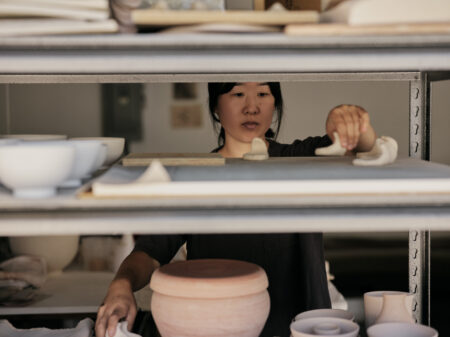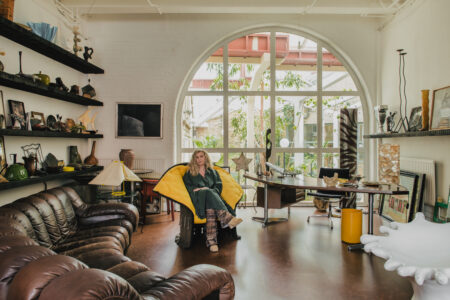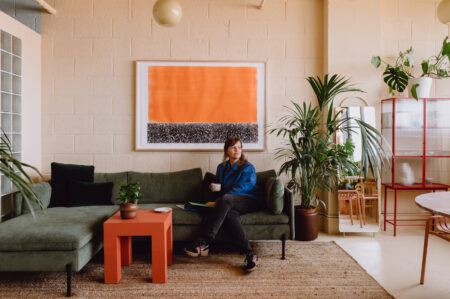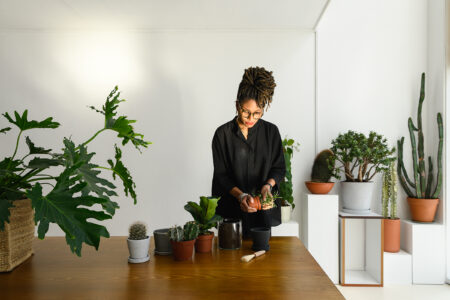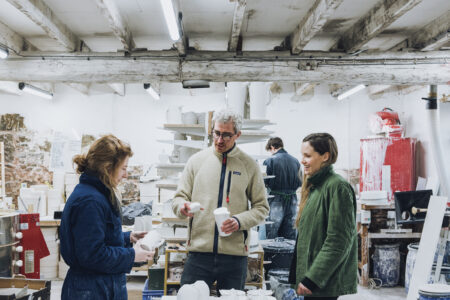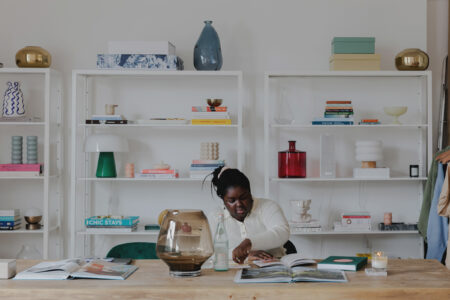Tola Adefioye of Old Old Woods on the therapeutic beauty of restoring mid-century furniture at his workshop in New Cross, south-east London

When Tola Adefioye of Old Old Woods started restoring furniture five years ago, it was simply an act of self-care. Therapy can come in many shapes, and fixing furniture was a way of fixing himself. Tola had no former experience in design – by trade, he is a full-time biomedical scientist – but found he had a knack for sourcing sought-after mid-century pieces: furniture by Carlo Forcolini, Marcel Breuer, Arne Jacobsen and Kristian Solmer Vedel has graced his workshop in New Cross, south-east London.
It’s hardly surprising, then, that Old Old Woods caught the eye of design enthusiasts and that over the years, Tola’s remedial hobby became fruitful in a way he hadn’t anticipated. But for Tola, his workshop – where he divides his time with the lab – is still first and foremost his safe space. As we visit Old Old Woods, he discusses escaping to his workshop, the differences between his two disciplines and the wonders of wood.

Tola: “People don’t really know the journey of Old Old Woods – it never started as a business as such. The name OOW came about four or five years ago when I started restoring as a form of therapy. Wood can be very forgiving. You can stain it, oil it, wax it, strip it, sand it: wood always reinvents itself. For what I was going through at the time, I needed to reinvent myself – and my studio was my safe space.
“A love of furniture has always been there, but the workshop itself came into existence because I needed somewhere I could work and get away from the noise of the world. The things I restored were a representation of how I was feeling, my mindset. For example, if I had a broken table or broken chair, I put myself in that chair’s position: if I spent a lot of time and love on that damaged item, I could somehow restore it back to its former glory or at least a functional state.
“I’m a lab scientist full-time, I specialise in haematology. We’re quite practical in the lab – but most of it is mental work. You need to know what you’re talking about. A biomedical scientist would say, ‘we don’t see the patients, but we do the diagnosis.’ You don’t get to touch anything as such – I look at a microscope and make notes based on what I see. With furniture, there’s a sense of feeling and touch – I needed that.
“The reason I started furniture restoration? I wanted something separate from the lab. With OOW, I can make and fix mistakes. You can’t afford to make mistakes in the lab. I like responsibility, but responsibilities that can cost someone’s life are mad. I needed a safe space that wasn’t connected to science or the pressures of the NHS. My workshop, as I like to call it, is that place.




“When you’re buying something old or vintage, you have to appreciate that the object has survived whatever it has been through in its lifespan – and it’s still in a structural and good condition for you to want to invest in and still consider it beautiful. That is the whole premise of my workshop: no matter what you go through, if you’re willing to invest time and energy, you’ll still come out beautiful.
“When sourcing furniture, I often get pieces even if I don’t know what they are – I just think, ‘this is absolutely beautiful.’ Everything I buy, I want it my house. OOW is very personal and I don’t go by what’s trending. I do find it hard to let go of certain things – I’ve had some pieces in the workshop for over a year. When you sell something, you might never come across it again.
“I found and fixed a Gordon Russell sideboard once. I didn’t realise it was Gordon Russell – I was simply in love with the lines of the piece. It required a lot of effort to restore because it had been made properly, with thick wood and lots of details. But it was a steal to buy – I did sell that one.
“When you see something damaged, put energy into it, restore it and get paid for it, it’s very fulfilling and validating. I’m not doing this for the money, but it’s nice to be encouraged that someone actually believes in what you’re doing and that this process is not just your gain.

“This is my third workshop, but it’s the first one where people can come and look at things, my first business step. But the premise is still the same – I fix things and it makes me feel good.
“My first two workshops were in disused buildings. I used to finish work and come straight to my studio and just work on stuff there. I didn’t really care, I just wanted to be with myself. But my current studio is more welcoming. The glass door means I get natural light. Looking around now, it looks like a storage unit took over the workshop but that’s because I have so much stuff here at the moment.
“I’m part of an organisation that caters to artists and makers, and they went to Lewisham council and said, ‘we’d love to give the ground floor of this new build to artists,’ so everyone around me is a painter, animator, ceramicist. There are lots of creative people around me, which is a nice energy to have.
“It’s very chill in my workshop. I’m very organized and usually have a plan. There’s always music playing. My favourite band in the entire world is Radiohead. I love Radiohead. It’s a sickness, it’s not even a joke. I could talk to you about Radiohead all day long. I feel like it’s something I can listen to by myself, and I don’t have to want someone to like it.


“Right now, I’m also listening to Vivaldi’s Four Seasons recomposed by Max Ritcher. I’m absolutely in love with it. There’s a track called Spring 1 and then Summer – those tracks are my jam.
“After work, there’s a place I go to with a friend who lives nearby. It’s in Deptford Square, beneath the arches, and it’s called Buster Mantis. It’s a bar that sells great Caribbean-inspired food. The owner messaged me once and said, ‘you’re that dude that does furniture. You always come to my place. Big up yourself,’ and it made me laugh. It was cool.
“The beautiful thing about my work here is that I don’t have to think too much. There are two things to do with furniture – strip it and finish it. There’s a process to it, but the endpoint is very simple. You’re going to fix it and it’s going to work. It’s just that simple.
“What makes design good to me is comfort. If you can relax on it, then that’s it, I’m happy. A chair, for instance, is something that props you up. It gives you confidence. I also like very unusual designs. You haven’t seen the best of OOW yet. The weird and wacky is coming.”






